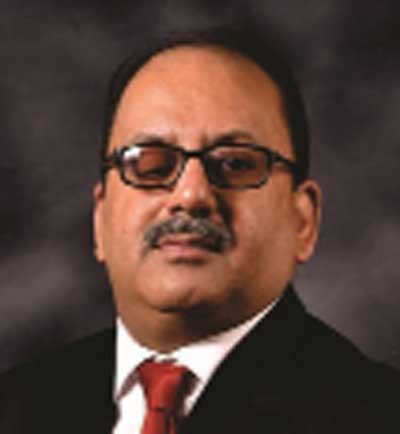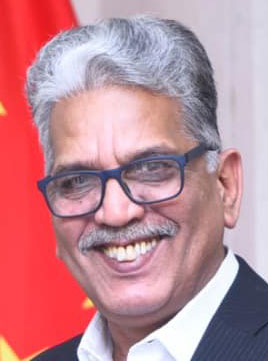Changes in social dynamics due to local restrictions impacted human behavior and led to a shift in crime dynamics. In this piece we will discuss shifts in crime. According to an advocacy brief, prepared by the UNODC’s Criminal Justice and Legal Reforms Sub-Programme-I, which works as a strategic partner and advisor to the Government of Pakistan, possible impact of COVID-19 on crime would be a shift in its dynamics owing to sudden economic downturns and natural disasters. Some of the most important potential dynamics of crimes during lockdown and COVID-19 include: 1 ) From heinous crime to domestic crime because of “Stay at home” restrictions ; 2) Distracted law enforcement due to the reorientation of law enforcement attention from routine crime response to social control measures; 3) Unemployment, economic strain, and survival crime will help in sharp spike in street crime, looting and snatching where population is especially economically disadvantaged and marginalized; 4) Profiteering by organized crime due to the demand for new products and services in an environment of tightened controls on movement and markets will produce opportunities for organized crime ; 5) Opportunistic cybercrime owing to the increase in the number of online buyers may also lead to increased cybercrimes in term of financial frauds, harassment, sexual exploitation and blackmailing.
Beyond all doubt, everyone will agree to the fact that Karachi is now safer then Chicago, Delhi and Mumbai. Karachi is a city of more than 20 million, which is almost equivalent to population of an average country and yet all crimes are relatively lower. There was a problem of gangs and terrorism in the distant past because of the spillover of Afghan war and influx of criminal classes from rest of Pakistan.
Over last decade, our law enforcement agencies have attained successes in operation against terrorists, banned outfits and militant wings of political and religious parties to restore peace in Karachi. Karachi has seen a considerable decrease in its crime rate over the years as the city fell to the 115th spot in the latest World Crime Index rankings.
The city’s current crime index has been calculated to 53.70, placing it on the 115th spot in the list that features over 300 cities. The port city was ranked sixth in 2014 and gradually, over the years, it fell down to 103 in 2020 as crime saw a decline. The efforts of the law enforcement agencies to curb crime have improved Karachi’s ranking in the World Crime Index, according to figures released by the international body.
Venezuela’s Caracas tops the crime index. Afghanistan’s Kabul ranks 14 on the list, Bangladesh’s Dhaka 43, Houston 52, India’s Delhi at number 82, Washington DC 88, Nantes in France is placed at number 105 whereas Bangalore is placed on the 108th spot in the crime index.
However, the city is facing an alarming increase in the menace of street crime. Recently, Citizen-Liaison Police Committee (CPLC) has released crime statistics spanning over the past eight months of 2021, showing a noticeable increase in crime in Karachi. During the first quarter of the current year, all records of the same period last year stood broken; and more than 30 people were killed while resisting armed robberies and mugging attempts. During the first three months of 2021, Karachiites lost millions of rupees in armed robberies and snatching at gunpoint with no district of the city remaining safe from the reach of criminals.
Now according to CPLC data, the incidence of killings in Karachi went up by 35 percent in the first eight months of 2021 and 335 persons were killed between January 1 and July 30 of this year. Meanwhile, 247 people had been murdered in the city during the same period last year (2020). CPLC report also showed that street crime and homicide had also increased in the city. Statistics released by CPLC showed that as many as 16,591 people had been deprived of their mobile phones in the first eight months of this year. In contrast, muggers had taken away mobile phones of 13,322 persons during the same period in 2020, showing a rise of 24 percent.
Similarly, the incidence of four-wheeler theft also increased. Data showed that 150 cars had been snatched at gunpoint in the city between January 1 and August 31, 2021. There was a sharp increase in incidents of motorcycle snatching. In the first eight months of the current year, 2,903 two-wheelers had been snatched in the city. However, 1,482 bikes had been snatched in Karachi during the same period in 2020. An analysis of motorcycle snatching data showed that this amounted to an increase of 95 percent.
This data gathered during COVID-19 pandemic is a stark reminder of how vulnerable our Karachi is due to poorly managed population density, resource deprivation, poor policing and maladministration. However, there is another epidemic that has been harming for much longer: violence and street crimes. Karachi is plagued by violent crime, provide valuable lessons on the relationship between COVID-19, violence and increase in street crimes.
As per Karachi Police Additional Inspector General (IG) Imran Yaqoob Minhas has said that the rise in street crime is also owed to a shift in crime and the police’s focus, which has full attention on implementing pandemic SOPs and maintaining lockdown restrictions. “Our cities enable the connectivity necessary for economic growth, but they also create opportunities to destroy it, with dense urban centers vulnerable to crime”, he added.
The 2020 Global Peace Index estimates that the national cost of violence in Pakistan has ranged between 8% and 13% of GDP per annum over the last five years. Karachi has reported more than 1,000 deaths resulting from the virus. But what of the deaths beyond COVID-19?
According to a research report, strict lockdowns implemented in a number of countries have led to some surprising outcomes. For example, in the first few weeks of lockdown in South Africa, cities recorded fewer deaths than any other time in recent history. Murder rates decreased by 72%, rape by 87%, and assault by 85%. Carjacking and robbery also reduced by around 80% and 60% respectively. Similarly, in Pakistan, there was a reduction in homicide kidnappings for ransom, bank robberies, and heinous crimes, in the weeks following the lockdown.
As a result of reduced movement and mobility under lockdown, metropolitan city saw changes in the patterns of urban crime, most notably in following key areas:
Shifts in policing resources changing criminal opportunities:
Although Karachi saw a decline in violent crime, street crime – including muggings, vehicular theft, house robberies, mobile snatching – remained rampant. This was partly due to police resources shifting away from routine police work, such as patrolling, towards enforcement of lockdowns. Increased socio-economic stresses resulting from the pandemic have also played a role. According to Karachi Police Chief, Imran Yaqoob Minhas “Due to increasing unemployment, where thousands of people lost their job during the pandemic, people are being involved in snatching, theft and dacoity”. “The lockdown in Karachi also saw an increase in crimes of profiteering, black-marketing, and hoarding of essential goods” the chief added.
Supply of illicit drugs and rise in trafficking:
The lockdown in Karachi meant that international narcotics trafficking routes saw temporary blocks. While talking to senior official of Karachi police, he acknowledged that drug consumption is directly proportional to street crime and violence. Most of the drug addict either commit heinous crime as it was in the case of murder of CEO of Usman Institute of Technology or snatch vehicle/mobile for easy money. Post-lockdown, however, trafficking and peddling has steadily increased, and in some cases. it was even facilitated by police. According to a report prepared by the Special Branch, Sindh Police, at least 363 dens of narcotics are operating in Karachi with the connivance of police officials. Majority of the dens, 164, are running in district Central, followed by 89 dens in district West, 39 in district old city areas, 19 in district East, 15 in district South, 15 in district Korangi and four in Malir district. The report further underlines the fact that not only the police are helping or patronizing these narcotics dens but they are “directly involved in running these dens and also collect millions of rupees from there.
“As far as mafias and cartels are concerned, they do not work in isolation, they work as international chains, Karachi Police try to break the chain when and where possible on upper level. But before blaming police one need to understand that we do not have access to those who cross the borders and cannot apprehend culprits. We have our limitations. Our Police force can get hands only 2nd or 3rd tier of mafias” said senior police official. Though major gangs of drug traffickers had been busted after their leaders and members have been arrested, he further added.
Increase in Violent Domestic Crimes:
As in other cities worldwide, there have been significant concerns about increases in domestic violence and assault during the lockdown in Karachi. There is no data currently available to suggest how many women and children are at risk. Nevertheless, the closure of shelters and social welfare help lines across Pakistan during the lockdown has further limited the channels available to women suffering from abuse. “This is quite understandable,” says Additional IG, Imran Yaqoob Minhas “if you have a chance to visit these slum or densely populated areas where 8 to 10 people live in 10*10 single room or huts. Men find their women and children soft target to vent out their frustration and depression while facing financial crisis and unemployment”. “definitely we cannot supervise each home. However, our SHOs and officers of police stations have standing orders to register cases of domestic violence without fail.” he asserted.
Investing in Police Force:
Just as COVID-19 has demanded more investment in healthcare and education that addresses socio-economic disparities, so too should the response to increasing crime and dwindling community-police relations. Allocating resources to these areas can reduce the burden on the police during a crisis, allowing them to focus on response and investigation. Every government in Pakistan, has vowed for police reforms. It is preposterous of politicians to talk about enhancing the capacity and capabilities of the police without ensuring a commensurate increase in crime-fighting resources. Indeed, the required funds are missing in the police budget though crime figures keep pace with an increasing population.
In his recent article titled “The dilemma of Police Reforms”, Ex-IGP Sindh and present IG National Highway and Motorways, Dr Kaleem Imam states ” …one needs to think about the factors that are seemingly stopping us from making a paradigm shift from the police’s colonial mindset and getting upgraded to a modern service for citizens. International public policy literature tells us that a lack of career planning, insufficient budget, interference in police operations and investigations, and a lack of accountability of delinquent police officials is a recipe of compromised policing.”
According to a senior police official serving in Karachi district, “the entire police system needs a serious overhauling before expecting results from the present police force which is financially neither well off nor fully trained on modern lines to deal with the crisis, pressure and stress”. “Before working on major reforms a few simple measures can greatly improve capacity and performance of police force”, he said.
“Firstly their duty hours should be adjusted on humanly basis no human mind can work 12 hours with full dedication and zeal. Their duty hours should be 8-hours so that they can have sound sleep and rest. An over-stressed force cannot yield expected results”, the seasoned officer emphasized.
“Secondly the salary and remuneration of lower ranks of jawans should be brought at par. A well-incentivize force give much better results than the force which has to earn their decent livelihood from chaie-pani”.
“Last but not the least, capacity building of force on modern lines for stress management and professional needs is the need of the hour today. It is a high time for federal and provincial governments to invest on capacity building of lower ranks of police force. This investment in human resource would bring forth “much-sentisized” and tolerant force moving towards “serving the public,” concluded the senior cop.
Sign in
Welcome! Log into your account
Forgot your password? Get help
Password recovery
Recover your password
A password will be e-mailed to you.







